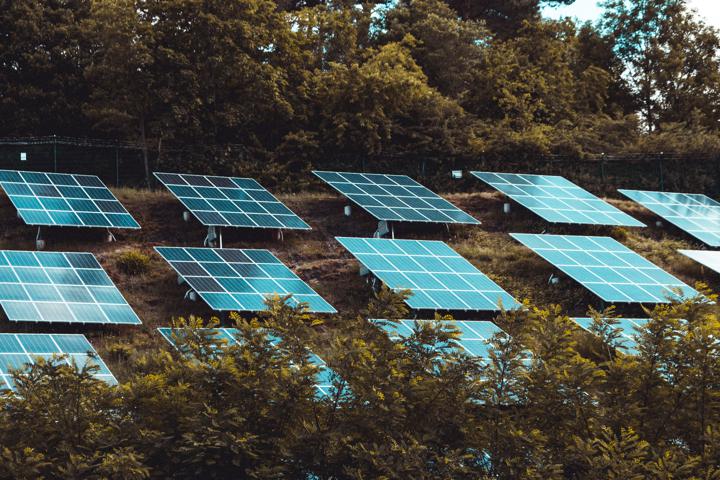
By Charlie Agnew, Managing Director of Energy Services
Since autumn 2019, Competitive Energy Services has given a great deal of attention and effort to supporting our clients’ pursuit of Net Energy Billing (NEB) in Maine.
Overseen by the Maine Public Utilities Commission, NEB makes it possible for businesses and municipalities to receive financial benefits associated with energy produced by qualified renewable projects, most commonly solar arrays. A unique characteristic of Maine’s NEB program is that it allows multiple groups within a community to simultaneously share benefits from one solar array, for example, without the need to connect to the array or invest in its development. The NEB program also allows customers to offset their electricity bills by using the output from small- to medium-sized renewable generators. Under the umbrella of NEB in Maine, two programs exist: 1. NEB kWh Credit Program, which is available for all electric utility customers, and 2. NEB Tariff Rate Program, available to non-residential customers. NEB or net metering programs across the U.S. have resulted in growth in renewable projects and savings for consumers, and Maine’s program follows the model established by similar programs in states like New York, New Jersey, Connecticut, Massachusetts, and Colorado.
Early 2019 was an exciting time for CES and our Maine clients. At that time, we witnessed legislation enacted that fundamentally changed the existing NEB program and put it to work for many of our commercial and institutional clients. Falling costs of solar, inexpensive capital, and stable energy markets were the drumbeat driving the initial rush of interest. At the time, we were blissfully unaware of how a global pandemic could change the cadence.
Maine’s 2019 revisions to the state’s NEB program revealed rapid interest in the development and financing of new solar projects. Clients and consumers were eager to participate. Never had there been such a potentially beneficial renewable energy program for commercial electric customers. New NEB rules expanded the size of qualifying projects to 5 MW, lifted the 10-account limit per project, and established a NEB credit rate whereby medium and large utility customers could recover nearly the full retail rate of their electricity costs. These conditions reduced all barriers for participation, developers were plentiful and eager, federal tax incentives were available, and we were off and running.
At that time, CES started by working with all of our interested clients with an intent to support the advent of the solar NEB market in Maine, much like CES had done 20 years prior when Maine’s electric market was first deregulated. CES formed its first NEB consortium (with others soon to follow) and went to market seeking nearly 250 MWHs of generation as the new NEB program was taking effect. Initially CES found a plentiful volume of projects and eager developers and began to set high expectations for participants, albeit with some initial skepticism and concern for what was often referred to as “too good to be true.”
Time passed, progress was made, and as we wrapped up the first 600+ NEB contracts executed in early 2020, the COVID pandemic appeared only as a temporary disruption to business as usual. We were quick to find workarounds for communication, business meetings, public processes, signatures – virtually everything. Continued optimism and excitement prevailed as did the pandemic. Utility and legislative challenges at the end of 2020 began to impact developer nerves and it became evident that we would be challenged to make it through without some project attrition. Along with the rest of society, we also began to realize that the pandemic had been silently eroding the backbone of a global supply chain, including that of the solar industry. By the spring and summer of 2021, harsh realizations about increased costs and longer lead times became a reality and began to throw off the typical development pace. Project developers had difficulties with project costs and thus financing, while estimated timelines were extended, and the actual challenges ahead were made clear.
As the pandemic rolled on, production and acquisition of steel and solar modules became increasingly expensive, labor became harder to find, volatility and a bull run took over our energy markets, and legislation tightened around the NEB program. Project attrition and price increases became a reality.
As we bring this story to present day, not a great deal has changed over this two and half years. In that time, we have seen a flurry of new solar development activity that will continue for the next several years and expand this clean energy resource in the state of Maine. This will all take place at a relatively rapid pace for what we are used to as Mainers or relative to prior rates of solar adoption. Each of these projects and transmission expenditures, along with the overall outcome, will help to raise important and thought-provoking questions. The challenges will be part of the mix, too, encouraging us all to stay ahead of the curve and maintain a measured approach. I am very grateful for the ability to forget all the challenges from when we started to where we are today and remain as optimistic as we were from the start of this effort. At the end of the day, many of our clients will see their projects operate successfully and will be able to tell their own stories of these clean energy projects and their connection to them.
What’s Next?
First and foremost, it’s important to remember that we have a long way to go before all of our new NEB solar projects will be online – significant support is needed to bring these projects into existence. At the same time, we do expect a more limited version of the NEB program to continue for some time, and new interest and alternative programs to develop.
Looking beyond NEB to Maine’s broader energy future, as many are becoming increasingly aware, there are significant structural and financial challenges ahead in the transition to a electric vehicles and addressing fossil fuel-based heating. That’s all well and understood, but as we read this story consumers are in dire need of utility-bill support now more than ever. This winter’s energy pricing has transitioned from some record low points to a shocking new baseline for all energy resources. Specific to the electric market, as we look to adopt heat pump technology and electric vehicles, the shock of high prices is certainly going to deter and lengthen the adoption time - and time, of course, is of the essence in addressing the threat of climate change.
So where do we go from here? For Mainers it is a combination of old school principals and adoption of new school technology.
First, we must use this point in time to innovate and re-think what we are doing to fuel our lives today, and how we can do that with greater efficiency and without added cost. This would require a change in habits, and some investment and adoption of more efficient and electric means of heating, cooling, and travel. Much of this is available today and the pandemic has been a good teacher of how to adapt.
Second, we must go back to our fundamental principles of diligent and creative energy procurement strategies. We must constantly ask questions and look objectively into how we are doing things today and how those decisions and actions will impact the future of what we do as a community.
Onward on that path we go, learning all the way!
If you have questions regarding Net Energy Billing in Maine as an option for your business, contact Charlie Agnew at (207) 772-6190 ext. 225 or cagnew@competitive-energy.com
Photo by Moritz Kindler
